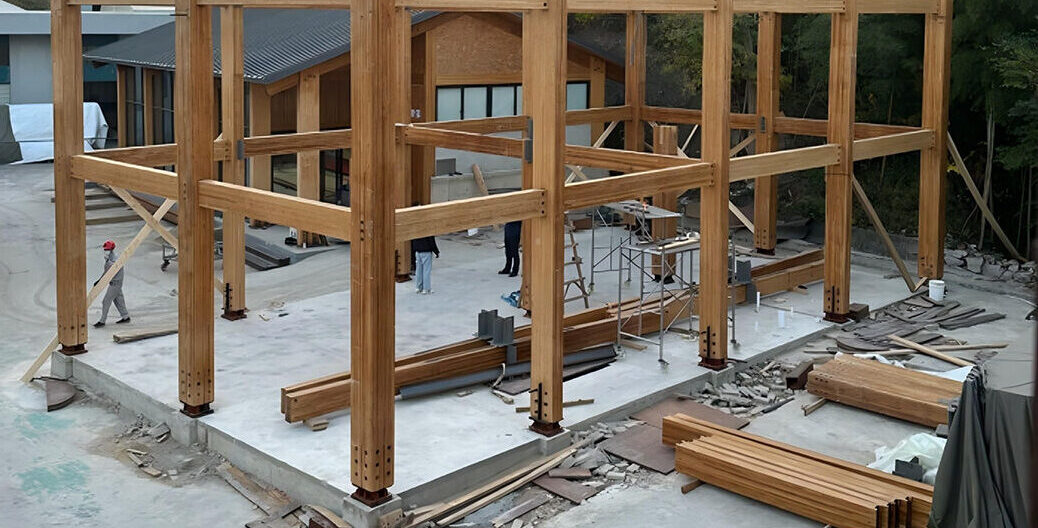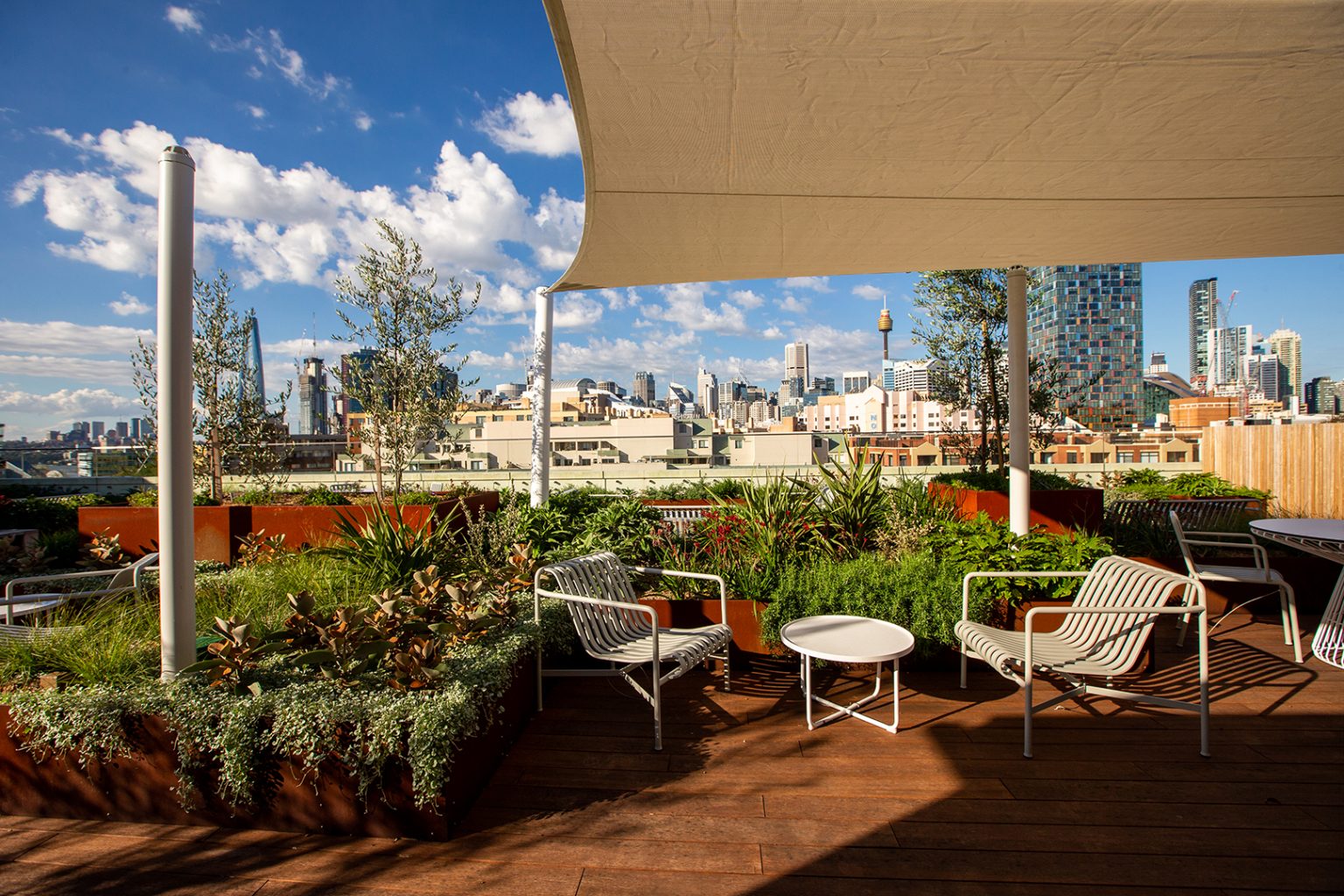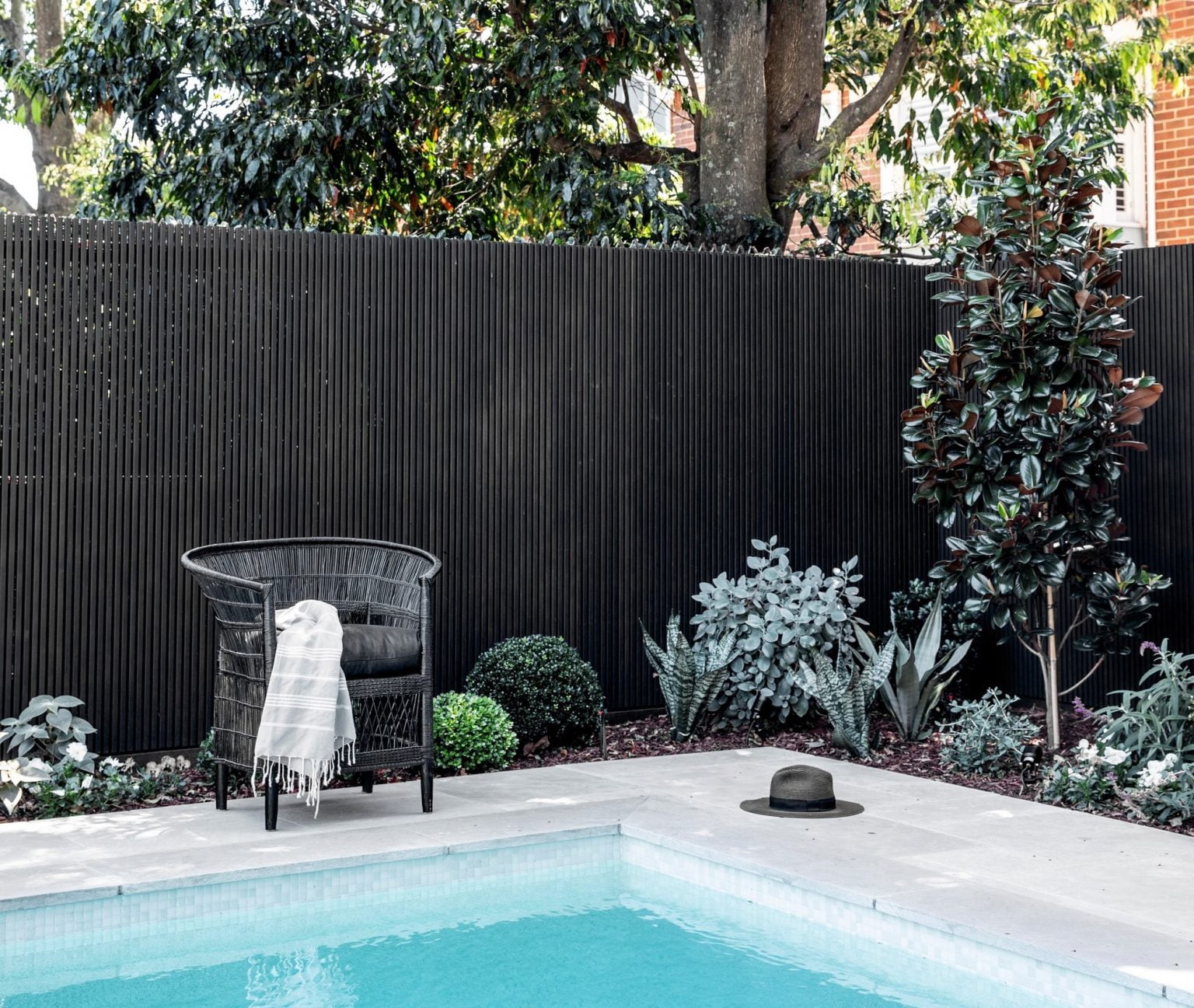The SIM-PAC Live Sustainability Awards are one of the Asia–Pacific region’s leading platforms for recognising innovation in sustainable manufacturing, circular design and low-carbon materials. Held annually, SIM-PAC brings together industry leaders in construction, engineering, product development and materials science to highlight solutions that advance net-zero goals and deliver real-world environmental impact. With 23 award categories, including Lifecycle Design, Circular Manufacturing, Low Carbon Innovation and Sustainable Materials, the awards celebrate measurable progress toward regenerative, future-ready industry practices. This year, House of Bamboo® was nominated for the first time and recognised in the Lifecycle Design category with a Judge Commendation Award, acknowledging our leadership in engineered bamboo and circular material systems. House of Bamboo® Honoured for Lifecycle Design Innovation House of Bamboo® is proud to receive the Judge Commendation Award in the 2025 SIM-PAC Sustainability Awards. The award was accepted for our team by CEO Jennifer Snyders, whose leadership continues to guide our progress in circular material innovation. This recognition reflects our long-standing commitment to: circular design. environmentally responsible production. engineered bamboo systems that support durable, low-carbon construction across Australia. “This award reflects our belief that sustainable materials must perform, endure, and inspire. Engineered bamboo enables architects and designers to build responsibly without compromising beauty or technical excellence.” — Jennifer Snyders Why Engineered Bamboo is Leading Lifecycle-Led Design Modern architecture requires materials that perform across the entire lifecycle from responsible sourcing to efficient installation, maintenance, reuse, and end-of-life recovery. Engineered bamboo uniquely meets these criteria. Here are the core reasons bamboo is becoming a preferred choice for lifecycle-driven projects: Circularity at Every Stage Engineered bamboo supports a full circular design framework through: Renewable raw material with rapid regrowth. Low-carbon production processes. Design-for-disassembly systems that support reuse. Modular components adaptable to multiple applications. Reduced waste across manufacturing and installation. This systems-based approach ensures bamboo contributes to regenerative outcomes, not just reduced environmental impact. Engineered Performance That Rivals High-Carbon Materials Engineered bamboo is produced through precision layering and lamination techniques, offering: High structural strength. Dimensional stability in variable climates. Resistance to movement, warping and cupping. Consistent manufacturing and quality control. FSC-certified supply chain assurance. For architects and designers who need performance without environmental compromise, engineered bamboo stands out as a reliable, future-ready choice. Real-World Impact Across Architectural Sectors Engineered bamboo is already delivering measurable environmental and aesthetic benefits across: Façade systems Modular screens, shading structures, and high-performance external cladding. Interior architecture Ceilings, walls, acoustic elements and feature joinery. Landscapes and outdoor structures Screening, fencing, decks, pergolas, and shade systems. Modular and prefabricated design Kit-of-parts solutions that support adaptive and reusable architecture. These applications demonstrate that bamboo is not only a material alternative, but a design tool enabling elegant, low-carbon outcomes across diverse project typologies. A Recognition of Innovation and Leadership The Judge Commendation Award reflects the dedication of our team led by CEO Jennifer Snyders to advancing renewable material systems in Australia. Our work integrates: Collaborative design with architects and engineers. Early-stage technical guidance. Feasibility, detailing and material optimisation. Efficient prefabrication and modular installation. Sustainability metrics and lifecycle reporting. This award reinforces the role engineered bamboo can play in shaping the built environment of the future. Explore Applications, Technical Data & Project Examples For architects, designers and specifiers looking to integrate bamboo into upcoming projects, House of Bamboo® offers a complete ecosystem of resources: Application library featuring façade, interior and landscape uses. Technical documents for product performance and compliance. Case studies with lifecycle-driven design examples. Specification guidance for engineered bamboo systems. Samples and custom solutions for project teams. A Smarter Material for a Low-Carbon Future As Australia moves toward regenerative and circular construction models, engineered bamboo is emerging as a practical, scalable and beautiful solution. The SIM-PAC award serves not only as recognition, but as a signal that renewable alternatives are ready to step into mainstream architectural practice.
As the built environment turns toward renewable materials, few voices are leading with as much clarity and scientific rigour as Professor Mahmud Ashraf of Deakin University. A long-time advocate of bio-based alternatives, his research into engineered bamboo is helping shift its reputation from niche to necessary. Associate Professor Mahmud Ashraf with laminated wood research. How It Started: A Shared Vision for Better Building Our connection with Professor Ashraf began during the early planning of our new bamboo-structured warehouse. While many engineering professionals remained hesitant or timber-led, Professor Ashraf saw potential. “He didn’t just see it as ‘alternative’ he recognised the performance potential from day one,” Jennifer Snyders, CEO, House of Bamboo® His offer to independently test our laminated bamboo beams wasn’t just generous it was catalytic. It brought credibility, structure, and an openness to collaboration that set a new benchmark for the project. From Lab to Load-Bearing: Making Innovation Real At Deakin, Professor Ashraf leads a specialised research team focused on bio-based construction materials, including bamboo, hempcrete, and advanced timber composites. But his work stands apart because of its applicability. He doesn’t just theorise he tests, validates, and translates data into industry language. His research into laminated bamboo where slats are compressed under pressure to form strong, uniform panels is critical to its structural credibility. He’s helping the industry see bamboo not as a novelty, but a genuine solution in the materials mix. The Structural Truth of Engineered Bamboo Ashraf’s work dissects the real-life performance of engineered bamboo its load-bearing capacity, its tensile strength, its reliability across climates. Unlike timber, bamboo offers a regenerative cycle that’s far shorter, and structurally, it rivals its hardwood peers when engineered correctly. “It’s not about replacing timber it’s about expanding what’s possible in regenerative design,” Professor Mahmud Ashraf What’s Missing: A Framework for the Future In a recent industry presentation hosted by House of Bamboo®, Ashraf made a clear and urgent call: for bamboo to thrive in Australia’s built environment, we need more than interest. We need: Testing standards tailored to local climates National engineering codes for bamboo-based structures Stronger partnerships between industry and academia Education beyond ‘eco’ focused on performance, certification, and safety A Collaborative Force in a Changing Industry In a materials sector that can be slow to evolve, Professor Ashraf’s role is more than academic he’s an active participant in rethinking what we build with, how we certify it, and how we communicate its value. His ability to unite engineering data with market needs and do so with curiosity, clarity, and credibility makes him a valued partner in our mission at House of Bamboo®. “He’s helped put bamboo in the same conversation as timber not as an alternative, but as an equal.” House of Bamboo®
JED LONG’S OFF-GRID CABIN REIMAGINES THE FUTURE OF DESIGN WITH ENGINEERED BAMBOO AT ITS CORE In a recent update shared directly with House of Bamboo®, architect Jed Long, Co-Founder of Cave Urban, gave us a closer look at his latest project, a prototype cabin built from laminated bamboo in regional Australia. For over a decade, Jed has explored how bamboo can be used structurally, and this project marks an exciting step forward. This cabin isn’t just a building, it’s a material manifesto. In a world where building regulations can often limit material innovation, Jed Long posed a crucial question: ‘How do you build with bamboo in a highly regulated context?’ That question became the foundation of his next design journey. Images shared by Jed Long, Co-Founder of Cave Urban. The prototype cabin utilises a full laminated bamboo frame, demonstrating its structural integrity and suitability for prefabricated construction. Why bamboo, why now? The building industry faces an urgent need for low-carbon alternatives to timber. Jed explained, bamboo grows rapidly, absorbs more carbon than most trees, and offers structural performance comparable to steel and hardwood without the environmental cost. House of Bamboo® Products in Use Jed acknowledged that the integration of House of Bamboo®’s engineered bamboo products are being used throughout the cabin. From structural posts and beams to internal joinery, our bamboo plays a central role in both the build’s strength and its natural aesthetic. This project demonstrates just how adaptable and reliable bamboo can be even in modern construction settings. Images shared by Jed Long, Co-Founder of Cave Urban. Images shared by Jed Long, Co-Founder of Cave Urban. Laminated bamboo beams and vertical posts support the roof structure, offering strength with a natural finish. Images shared by Jed Long,Co-Founder of Cave Urban. Images shared by Jed Long,Co-Founder of Cave Urban. Precision-cut laminated bamboo members are secured with concealed joinery, highlighting the material’s consistency and performance in structural applications. A Shared Mission for Sustainable Building Jed’s goal to create modular, scalable bamboo buildings for the Australian market aligns perfectly with House of Bamboo®’s legacy. For over 50 years, we’ve supported architects, designers, and builders with high-quality, sustainable materials. This project demonstrates that bamboo is no longer an emerging alternative it is a viable material for contemporary architecture and interior environments. Together, we’re laying the foundation for a future where bamboo stands proudly alongside timber, steel, and concrete in shaping the built environment. Images shared by Jed Long,Co-Founder of Cave Urban.
At House of Bamboo®, we were honoured to welcome Professor Yan Xiao, one of the world’s foremost authorities on structural bamboo, to speak at our recent event. His presence wasn’t just symbolic, it represented a profound alignment between innovation, sustainability, and the future of the built environment. Pioneering a Global First Professor Xiao is best known for designing and constructing the world’s first 7-storey building made entirely from engineered structural bamboo. This monumental achievement has reframed what’s possible with natural materials in large-scale construction. His work demonstrates that bamboo isn’t just decorative or supplementary it is a serious structural contender. Site section showing full vertical structure using bamboo framing. 7 storey residential structure built using GluBam engineered bamboo. 120m² layout designed for modern shared living. From Research to Real-World Impact With a background as Professor at Zhejiang University (China) and formerly at the University of Southern California, Xiao’s contributions to structural engineering are globally recognised. He has developed patented systems such as GluBam, an engineered bamboo composite used in bridges, buildings, and emergency housing all with the aim of reducing the environmental impact of construction. But it’s not just about innovation in theory. Professor Xiao works closely with manufacturers to ensure that the materials used in his designs meet both performance and environmental criteria. We are proud to say that our factory in China has supplied bamboo for some of his key projects a collaboration that continues to inspire us. A Message That Resonates During his presentation at House of Bamboo®, Professor Xiao shared insights into how bamboo can reshape the construction industry not in the distant future, but now. He spoke of bamboo’s: Exceptional strength-to-weight ratio Natural renewability and low carbon footprint Ability to replace timber and steel in many structural applications His work bridges continents and cultures, combining the technical rigour of engineering with the regenerative power of nature. Building a Sustainable Future Having Professor Xiao visit House of Bamboo® and share his experience with our audience was a milestone moment. His research and built work provide compelling proof that bamboo is not just an alternative it is a solution. As Australia seeks new pathways to build sustainably, voices like Professor Xiao’s light the way forward.
When acclaimed structural engineer Neil Thomas MBE stepped onto the House of Bamboo® stage, it felt less a formal keynote and more like the meeting of long-lost allies. Within minutes, we discovered a shared imperative: to leave the planet better than we found it, for our children and for the generations who will inhabit the buildings we design today. From London to Bali: a career defined by innovation Founder & Director, Atelier One, widely described as one of Britain’s most innovative engineering practices. Multiple honours, including an MBE, the IABSE Milne Medal (2019), and a World Architecture Festival “Building of the Year” (2012) for Gardens by the Bay, Singapore. Lecturer at Yale, MIT and other leading institutions, where he inspires the next wave of sustainable design thinkers. GREEN SCHOOL GYMNASIUM Green School Gymnasium, Indonesia, photography is by Tommaso Riva. LUMI SHALA Lumi Shala, Indonesia, photography is by Astbury, J. Yet it is his recent bamboo work that truly sets him apart. As lead engineer on The Arc at Green School, Bali a soaring series of interlocking bamboo arches, Thomas proved that natural materials can deliver the structural drama usually reserved for steel or concrete. It prompted him to declare: “If we were to design the ideal building material, it would look a lot like bamboo.” Why bamboo, why now? During his House of Bamboo® address, Neil set out an unflinching equation: He argued that the construction sector’s timber shortfall is already acute, and that bamboo is the only scalable natural material capable of filling the gap without ecological harm. A partnership forged in purpose Our immediate connection was grounded in a shared goal: to accelerate the adoption of bamboo as a mainstream structural material. For over fifty years, House of Bamboo® has supplied projects across Australia, and Neil’s work exemplifies how these materials can redefine skylines around the world. Together, we envision a future where engineered bamboo stands alongside timber, steel, and concrete, enabling elegant, carbon-positive architecture at scale. As we embrace new engineering developments, it is crucial to champion materials that contribute to sustainability and innovation in construction. At House of Bamboo®, we are excited to partner with pioneers like Neil. To learn how to integrate bamboo into your projects, please visit our website or contact us to arrange a CPD session for your team.
A LIVING SHOWCASE OF STRUCTURAL BAMBOO At HOB, we recognised a fundamental gap in the construction and design industry, not a lack of awareness of bamboo’s aesthetic value, but of its architectural and structural potential. So we built something to shift that perception. Our Sydney headquarters transforms a 1950s warehouse into a living demonstration of what’s possible when engineered bamboo is integrated at every level of design and construction. It is one of the first commercial buildings in Australia to use structural bamboo as its core material. From the prefabricated beams, structural elements, to flooring, joinery, acoustic linings and bifold doors, bamboo is not simply displayed – it’s embedded in the very fabric of the building. Wherever possible, existing furniture and materials were repurposed, reinforcing our commitment to low-impact, high-performance design. The result is a versatile, low-embodied-carbon space that now functions as a working showroom, office, and education hub. This project was never just about building a space. It was about setting a benchmark, an environment designed to challenge outdated assumptions and demonstrate bamboo’s place in modern architecture. It invites professionals to see, touch, and reimagine what’s possible. We invite you to visit, explore the space, and consider what can be achieved when sustainability, performance and design converge. Read the full case study or contact us to arrange a visit.
Our beautiful new bamboo decking lasts much longer – so too will the world’s tropical rainforests. Introducing sustainably sourced, DassoXTR fused bamboo decking from the…
Four Compliant Pool Fencing Options If you are looking at building a pool in your home, you should look into the available pool fencing options…













